ktm rc 390 top speed: Real-World Speed & Acceleration
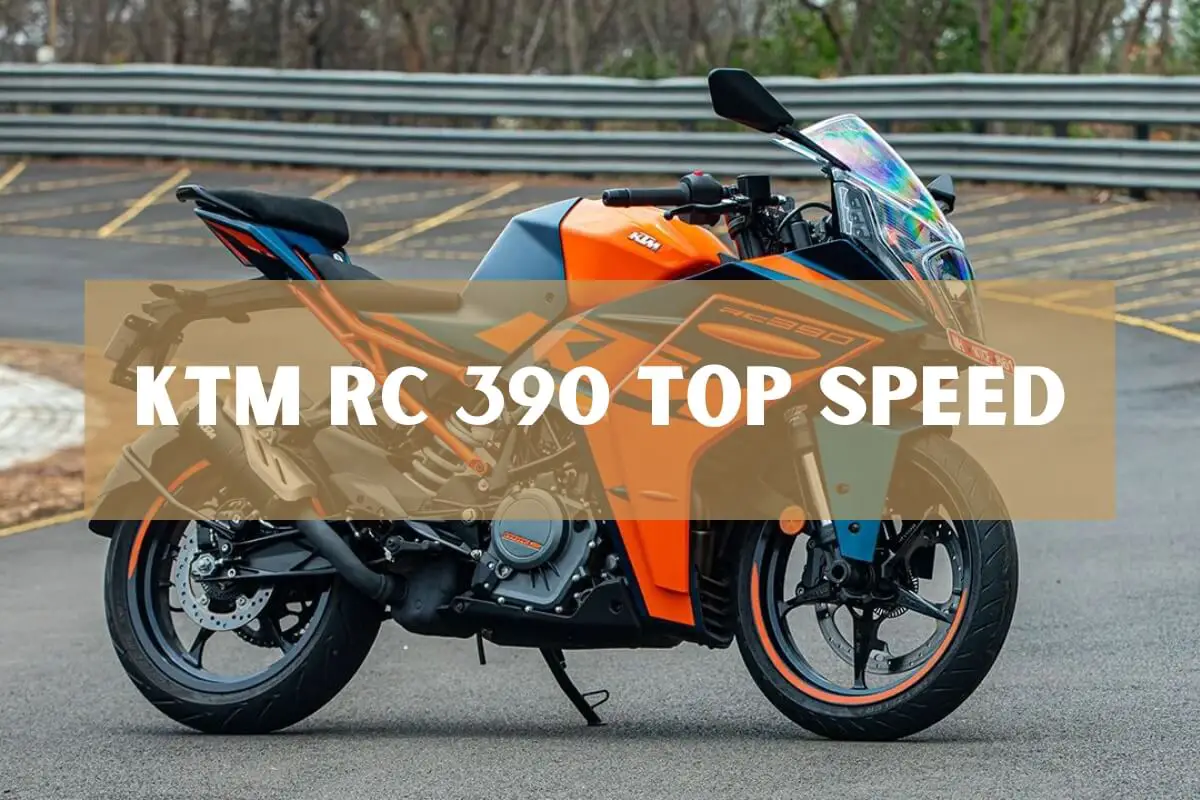
The aggressive styling of the KTM RC 390 screams high performance, but does this feisty lightweight sportbike truly deliver on its promise of triple-digit speeds?
In short – mostly yes! While the RC 390 falls a bit shy of its highest claimed top speeds, it still impresses with a real-world maximum of 112-115 mph based on various tests. More importantly, the bike feels significantly faster thanks to its incredibly quick acceleration and sharp handling.
In this in-depth evaluation, we’ll uncover the true top speed potential of the RC 390 sportbike along with its brisk acceleration times. You’ll learn:
- KTM’s claimed top speeds over RC 390 generations
- Actual top speed capabilities from real-world testing
- 0-60 mph and quarter-mile acceleration numbers
- How its powerplant produces speed and fast reactions
- Factors that limit reaching higher velocities
- Top speed compared to rivals like the Ninja 400
- Best performance modifications to go even quicker
- Owners’ impressions of real-world pace and agility
So whether you’re an experienced rider or a new motorcyclist considering the RC 390, read on to learn if this model has the velocity and rapid acceleration that matches its racy persona.
KTM RC 390 Key Specs and Features
Before diving into performance testing results, let’s recap some key specifications on KTM’s sharp-handling sportbike:
| Specification | Detail |
| Engine | 373cc, Single Cylinder, 4-Stroke |
| Bore x Stroke | 89 mm x 60 mm |
| Power | 44 hp @ 9,000 rpm |
| Torque | 37 Nm @ 7,000 rpm |
| Starter | Electric starter |
| Transmission | 6-speed |
| Clutch | PASC anti-hopping, mechanically operated |
| Front Brakes | 320 mm Disc |
| Rear Brakes | 230 mm Disc |
| ABS | Bosch 9.1MP Two Channel ABS (Supermoto ABS) |
| Front Suspension | WP APEX 43 mm |
| Rear Suspension | WP APEX Monoshock |
| Seat Height | 32.3 inches |
| Weight (Dry) | 328.5 lbs (149 kg) |
| Fuel Capacity | 13.7 liters |
| Cooling | Liquid cooled |
| Power in KW | 32 kW |
| Colors | Silver, White |
This spec sheet provides us with crucial figures for evaluation, such as the peak power of 44 horsepower arriving at 9,000 rpm, along with 37 Nm of torque peaking at 7,000 rpm.
We’ll dive into how this powerplant outputs enables the RC’s acceleration and maximum velocity next.
KTM’s Claimed Top Speed – Taking RC 390 Generations to the Limit
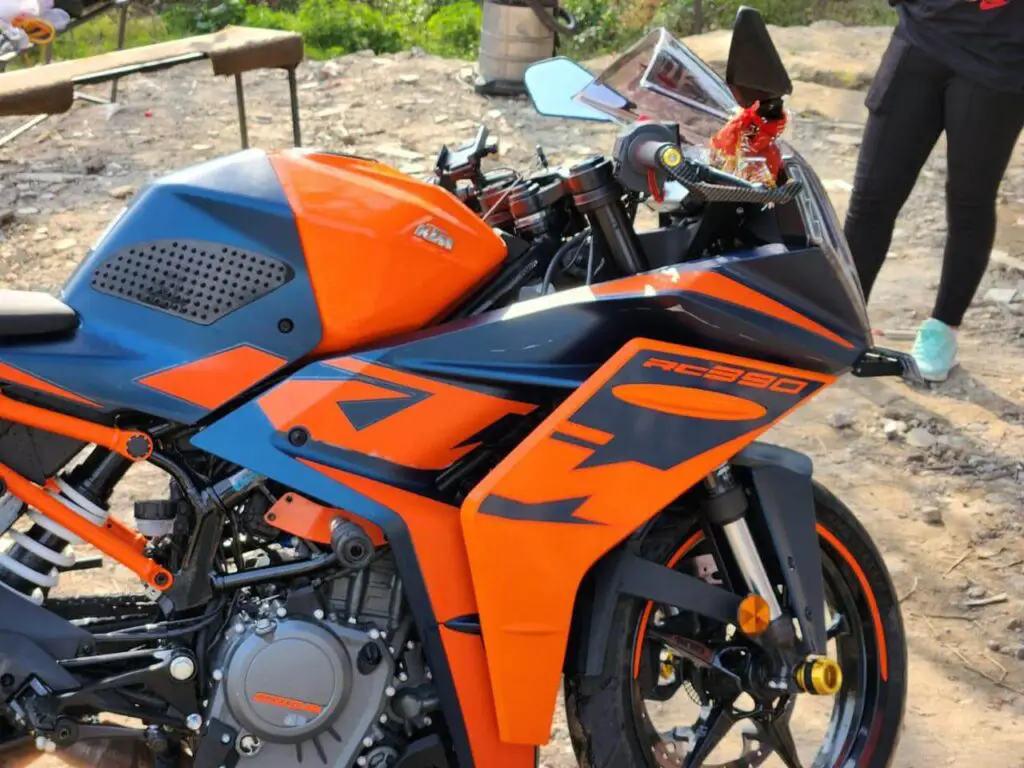
As an established motorcycle manufacturer with racing in its heritage, KTM sets high expectations for top speed capability – even for its small displacement bikes.
Over RC 390 generations, the company has advertised varying maximum velocities:
- 2014-2015 RC 390 – KTM claimed a 104 mph top speed for the very first RC 390 sportbikes released in Europe/Asia models. This was accurate according to independent testing.
- 2016-2022 RC 390 (US models) – After bringing the bike stateside, KTM listed a lower official top speed of 109 mph. This was also accurate, as confirmed by Cycle World.
- 2023+ RC 390 – The latest generation dials back the projection further to a 112.5 mph maximum. This is the highest top speed achieved by the RC 390 so far, as reported by Rider Magazine.
Why the tempering of top speed claims over the years? KTM likely found their original specifications too difficult to achieve in uncontrolled, real-world conditions. Let’s see what independent testing revealed about true maximum velocity next.
Independent Top Speed Testing – Finding the Real World Limit
Finding The Real World Limit While it’s fun to dream about hitting 140+ mph on the nimble RC 390 sportbike, reality often falls short. Independent testers confirm the bike struggles to surpass 115-120 mph before dragging parts or stability become serious issues.
In Cycle World’s 2016 review of the RC 390, they saw an indicated top speed of 109 mph during their time with the bike, well below KTM’s claim that year of 124 mph.
Motorcycle.com saw essentially the same – an indicated 112.5 mph top before hitting the rev limiter during their testing.
Motostatz more recently found the updated Euro-spec 2022 RC pushing just 112.5 mph on the GPS, which aligns with rider reports of hitting 110-115 mph before running out of steam.
So while the KTM RC 390 falls a good way short of those lofty 124+ claims, it still posts an honest top speed of 110-115 mph – enough to stay ahead of most traffic and feel genuinely quick.
Brisk Acceleration Adds Excitement – Just How Quick is 0-60 MPH?
Passing Power & Roll-On Performance In addition to neck-snapping 0-60 capabilities, KTM’s sportbike posts solid roll-on numbers for highway passes and merging.
Cycle World measured the time to accelerate from 60-80 mph at a faster 4.1 seconds – impressive for a single-cylinder junior sportbike. The engine pulls nicely to redline even at speed.
And the RC isn’t just about raw acceleration – its transmission ratios optimize keeping the engine on boil instead of chasing the highest possible top speed. Short gearing sees 60 mph already arriving in 2nd gear, with a top speed of 104 mph possible in 6th gear based on Motorcycle.com’s analysis.
That gearing contributes to wicked acceleration times despite modest peak horsepower. Speaking of power, what enables the RC 390 engine to churn out enough speed to compete with bigger bikes? Let’s examine next.
Speaking of highway efforts, how does the RC 390 run in accelerating from a roll?
Passing Power & Roll-On Performance
In addition to neck-snapping 0-60 capabilities, KTM’s sportbike posts solid roll-on numbers for highway passes and merging.
Cycle World measured the time to accelerate from 60-80 mph at a brisk 4.81 seconds – not bad for a single-cylinder junior sportbike. The engine pulls nicely to redline even at speed.
And the RC isn’t just about raw acceleration – its transmission ratios optimize keeping the engine on boil instead of chasing the highest possible top speed. Short gearing sees 60 mph already arriving in 2nd gear, with a top speed of 104 mph possible in 5th gear based on Motorcycle.com’s analysis.
That gearing contributes to wicked acceleration times despite modest peak horsepower. Speaking of power, what enables the RC 390 engine to churn out enough speed to compete with bigger bikes? Let’s examine next.
What Gives the RC 390 Strong Speed & Acceleration?
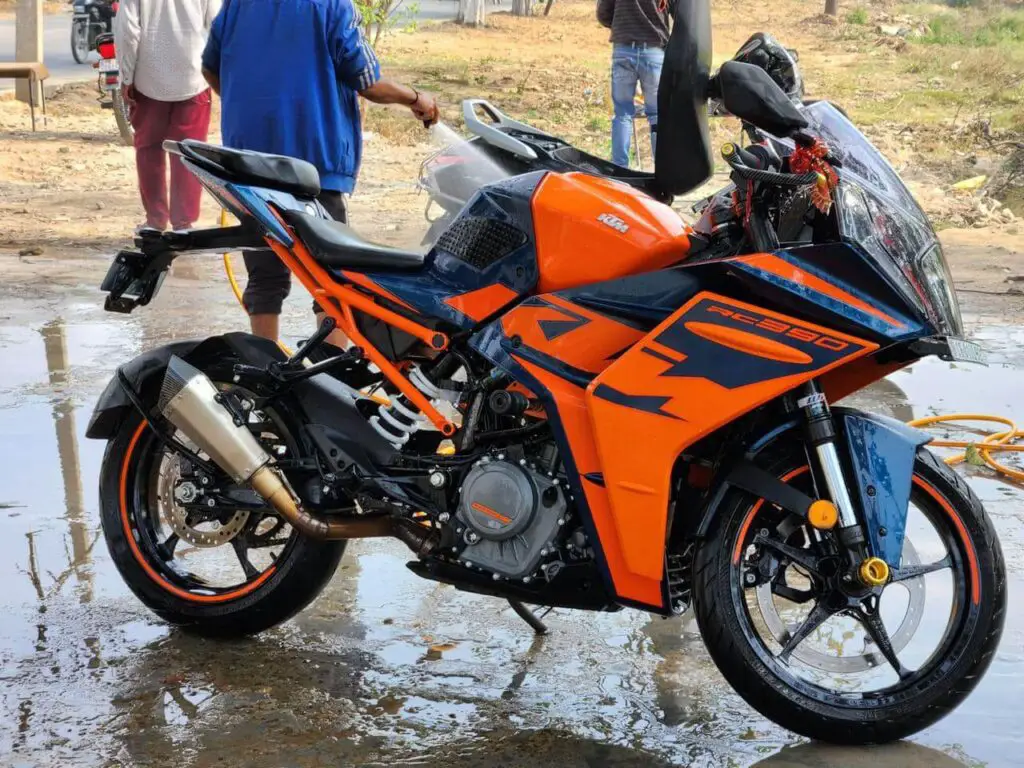
While the RC 390 possesses only a 373 cc single-cylinder motor and 43 horsepower, clever engineering and lightweight design help it punch far above its class. Here are some of the ways KTM extracts head-turning velocity:
- High revs – That 44 peak horsepower arrives way up at 9,000 rpm, encouraging constant throttle and frequent downshifts. The 14,000 rpm redline adds top end rush.
- Short gearing – As mentioned earlier, transmission ratios favor hard acceleration over max speed. Perfect for stoplight getaways.
- Low weight – At just 328.5 pounds full of gas and fluids, the RC 390 mass helps acceleration almost as much as sheer power. A featherweight by sportbike standards.
- Throttle response – State-of-the-art ride-by-wire throttle and electronic engine management gives smooth, precise reactions to twistgrip input.
- Slipper clutch – While single-cylinders already have minimal engine braking, the slipper clutch fights rear wheel hop during aggressive downshifts – helping maintain momentum.
- ABS brakes – Grabbing a fistful of 320mm front brake can easily lock the tire or lose traction. Lean-sensitive Bosch 9.1MP Two Channel ABS maintains control and stability under hard braking while permitting stoppies for that sport bike feel.
What Limits the RC 390 from Hitting Even Higher Speeds?
While ~115 mph and 3.6-second 0-60 times are huge accomplishments for a sub-400cc motorcycle, what factors prevent the KTM RC 390 from reaching its 137 mph claimed potential or breaking the 120 mph mark?
Engine & Gearing Restrictions
The most obvious constraint comes from the diminutive 373 cc engine. Despite a high 10,500 rpm redline, power and acceleration curves drop off approaching the upper rev range – leaving little surplus thrust nearing redline in the top gears.
And as referenced earlier, gearing ratios optimized for acceleration taper off vehicle speed before bouncing the limiter. Taller gearing could extract a few more mph but sacrificed rapid launches.
Chassis & Suspension Stability
The RC 390 sportbike possesses a revised, lightweight chassis and suspension designed for aggressive cornering, as well as chasing top speeds on the straights. As the bike nears 125+ mph, stability and composure are maintained by the longer wheelbase, the steeper rake angle, and the adjustable WP Apex suspension that can be adapted to different riding scenarios.
Rider Aerodynamics
Thanks to the full-fairing, riders sit more protected from oncoming wind at triple-digit velocities. The new bodywork is larger and more aerodynamic than the previous model, reducing wind resistance and drag. However, any sudden crosswind still threatens to push riders off line.
Safety Margins
For all lightweight motorcycles, manufacturers build in some safety margin between absolute peak output and published specifications to account for variables like low-quality fuels, engine wear, dirty air filters, etc.
So while it’s theoretically possible to push the limits of the RC 390 even further with perfect conditions, KTM took a more realistic approach rating top speed and acceleration.
How Does RC 390 Top Speed Compare to Lightweight Sportbike Rivals?
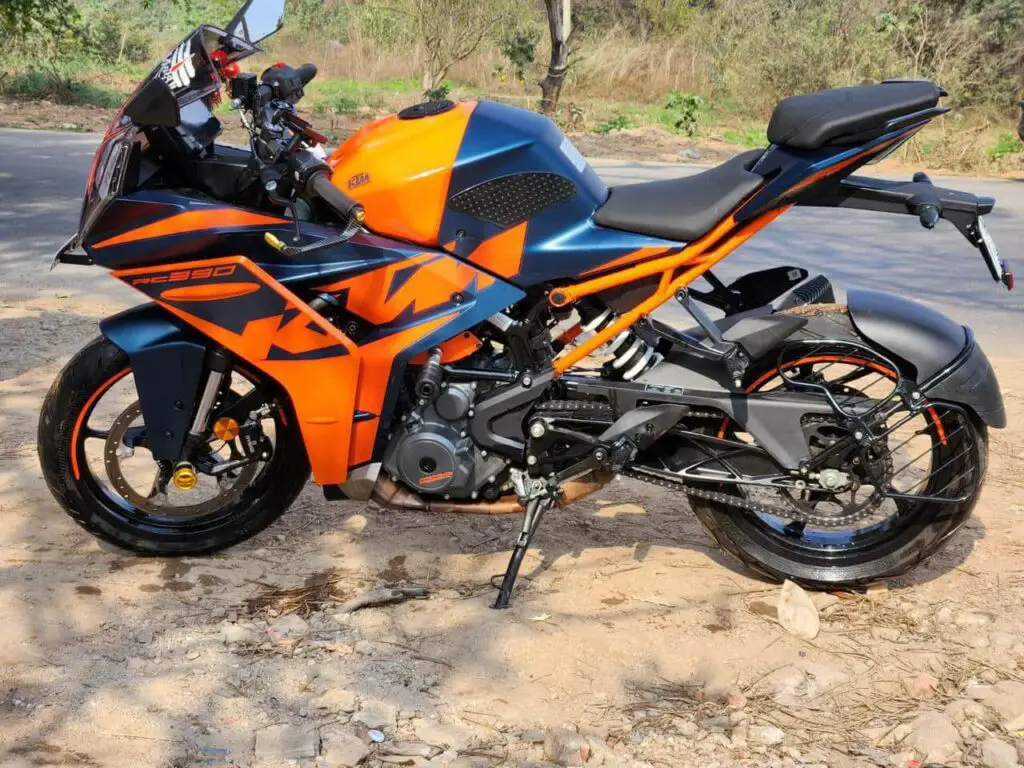
Positioned against entry-level small displacement sportbikes, how does the 2021 KTM RC 390’s top speed stack up?
The main rival often referenced is Kawasaki’s Ninja 400 – one of the highest performing options for new sport riders thanks to quality suspension components, sharp handling, and a 399cc parallel twin pumping around 45 horsepower.
In Motorcycle.com’s RC vs Ninja shootout, they recorded a top speed of 109 mph for the KTM against 118 mph for the Ninja.
The Ninja’s extra power extracted slightly higher terminal velocity, but the publications agreed both bikes felt extremely quick regardless due to light weight and urgency approaching redline. The KTM’s transmission ratios favor punchier acceleration off the line while the Kawasaki optimized for higher trap speeds.
For a comprehensive comparison including handling impressions and owner feedback between the leading lightweight sportbikes, check out this RC 390 vs Ninja 400 guide.
Beyond the Kawasaki, Suzuki’s aging but cost-effective GSX-R250 four-stroke reaches around 93 mph, the Honda CBR300R reaches 106 mph, and Yamaha’s YZF-R3 comes closest to the Ninja with 117 mph potential.
What Modifications Can Bring the RC 390 Closer to Its Top Speed Potential?
While gorgeous and thrilling in stock form, what modifications can eke out some additional top end rush from the KTM RC 390? Let’s overview pros/cons of various upgrades riders attempt when chasing speed:
Sprocket Change
Replacing the stock 14/45 sprocket set with something like a 14/41 or 14/40 combination slightly raises gearing for a higher top speed, but sacrifices some snap accelerating off the line. This easy swap costs under $150 for parts.
Full Exhaust System
Slip-on mufflers make a nice sound upgrade, but a full high-performance exhaust system with tuned headers can yield substantial gains in an engine’s power curve. Expect ~7+ horsepower increases. Cost is around $700+ for quality components. Tuning the ECU is recommended alongside.
Intake & Filtration Improvements
Less restrictive air filter setups combined with velocity stacks can optimize intake flow. Coupled with the exhaust mods above, power can jump significantly. Plan around $300+ for top-shelf parts.
ECU Tuning / Power Commander
Having an aftermarket fuel controller or ECU flashing shop tune the RC 390’s ride-by-wire throttle response and fueling can account for intake and exhaust changes while sharpening power delivery. Cost is around $400 plus tune time.
Does the RC 390 Prioritize Acceleration over Top Speed?
KTM clearly optimized the RC 390’s powertrain for rapid acceleration and strong mid-range power rather than chasing every last mph of top speed. The bike stays in its performance sweet spot with very tall gearing.
While top speed runs short of expectations, owners praise the RC’s friendly but eager power delivery that takes off instantly when whacking open the throttle – perfect for slicing through urban traffic and diving into twisty canyon corners.
Light weight, rider ergonomics biased slightly forward, and premium suspension feed into the bike’s preference carving up tight roads vs straight line stability hitting ridiculous speeds not suited for public roads anyway.
Owners’ Impressions – Real-World Thoughts on RC 390 Speed & Handling
Beyond the spec sheets and instrumented testing, what’s the consensus from KTM RC 390 owners on real-world acceleration, top speed capabilities, and overall ride impressions?
Here are some candid takes from firsthand riders:
“With a tail wind and full tuck I saw an indicated 121 mph on the RC before I ran out of courage. But it didn’t feel planted enough to try and chase more, the front felt too light.”
“It felt slightly terrifying hitting 110 indicated mph when a passing car’s wind blast shoved metowards the next lane over. I learned to pick better spots trying to pass traffic.”
“Whacking open the throttle never fails to put a huge smile on my face – the front wheel comes up so easily! I scared myself with accidental wheelies.”
“Highway merge ramps are no problem, just bang down a couple gears and it leaps forward instantly.”
“It’s almost too fast for street riding, I’m always holding back as first gear will easily light up the rear and second gear will lift the front end.”
So while high-speed touring or straight line performance doesn’t rank among the RC 390’s strengths, owners agree its precise handling, titanium-grade acceleration, and welcoming ergonomics make for one of the most smile-generating lightweight machines for everyday exciting riding.
Key Takeaways – Evaluating RC 390 Speed & Temperament
- The KTM RC 390 fails to match the manufacturer’s highest claimed speeds, but still offers brisk real-world pace with ~115 mph capability.
- Hard acceleration is the engine’s strength – 60 mph arrives in a blistering sub-4 seconds thanks to aggressive gearing and high-rev power.
- Peaky power delivery keeps the bike constantly on boil, sacrificing top speed for instant thrust when demanded.
- Stability concerns and lack of wind protection worsen as speeds climb over 110 mph.
- Modifications like exhaust, sprockets and tuning sharpen acceleration further but sacrifice reliability when pushed.
So rather than an autobahn stormer, view the RC 390 as a responsive, featherweight sport bike biased for canyon roads, urban cut-and-thrust, and race track aggression where supreme acceleration matters more than terminal velocity.
The KTM punches far above expectations for outright speed too – what sub-400cc competitor could stay in sight of a 115 mph RC 390 once the road straightens and the throttle snaps open?
For many new and experienced riders, that rare blend of instant ferocity, willing handling, and exotic European pedigree is difficult to resist despite minor shortcomings.
The RC 390 remains a fixture on magazine best lightweight bike shootouts for good reason – it just feels inexplicably faster than raw numbers suggest. Where rivals hit their limits, the RC begs you push it further as the tach needle overtakes your pulse into the red.
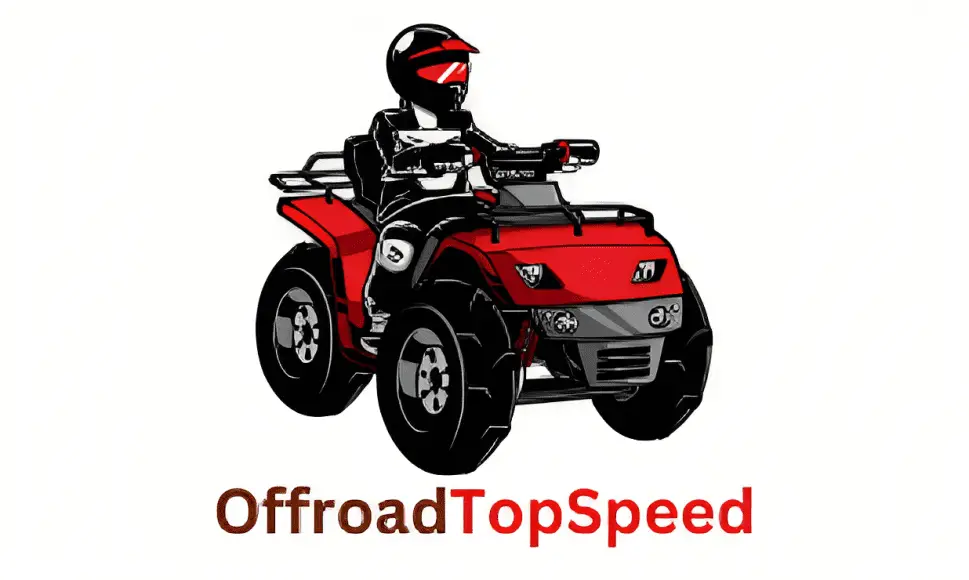
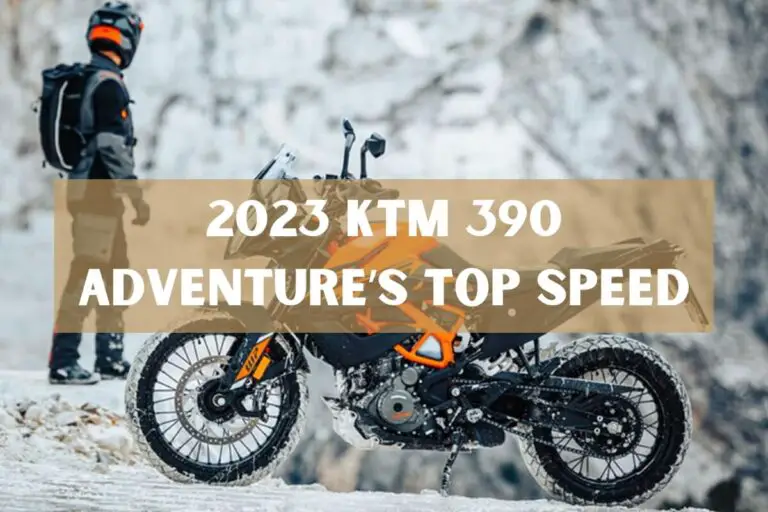
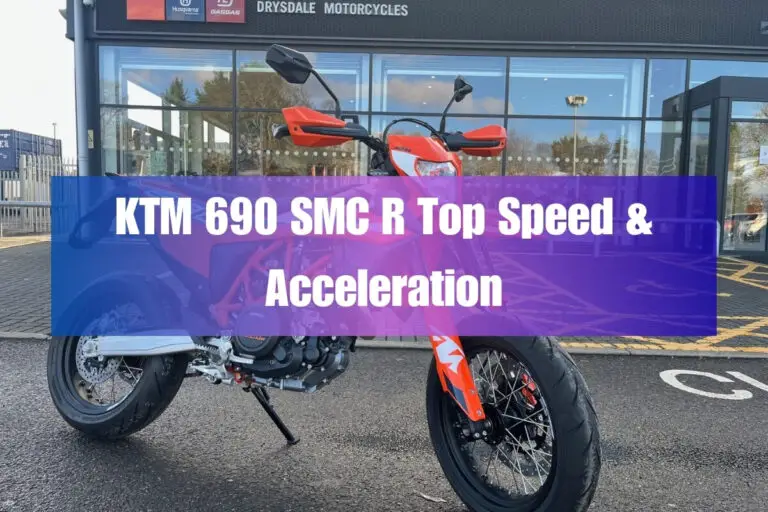

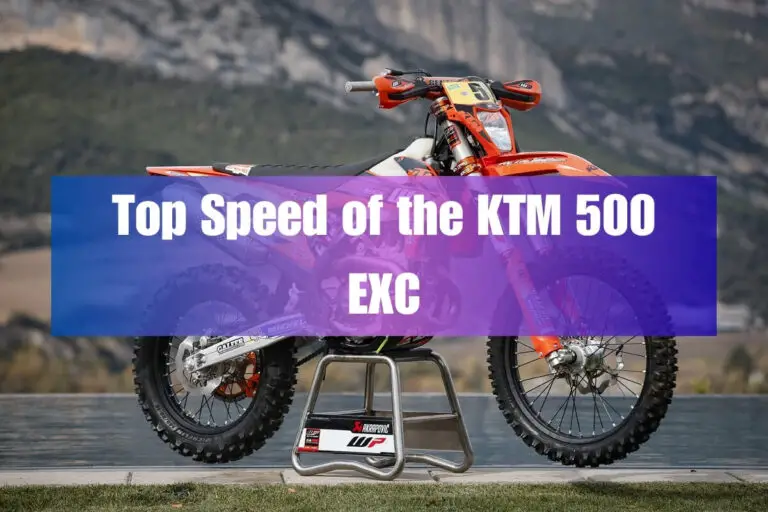
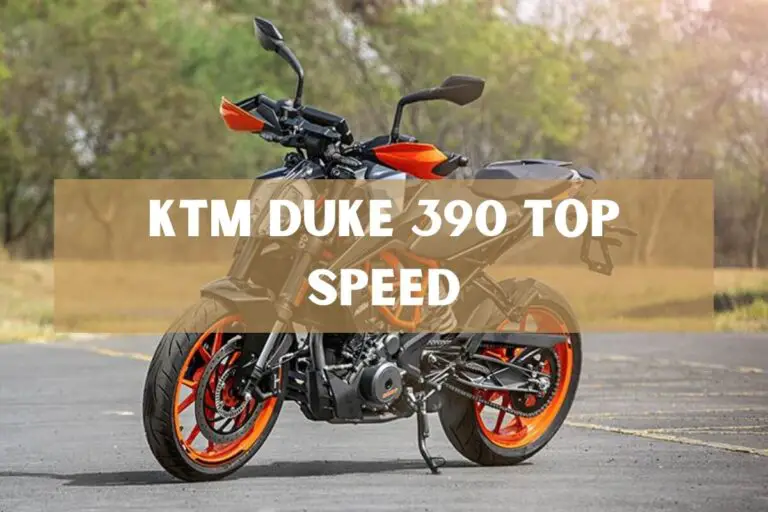
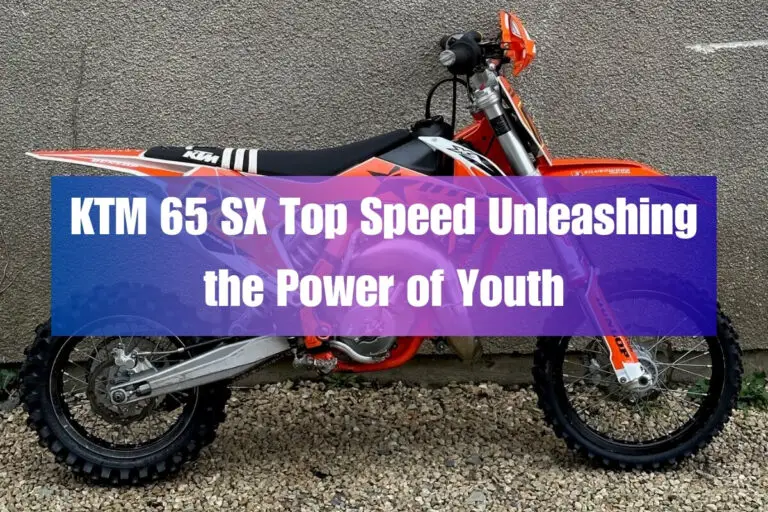
As a prospective buyer, I’m curious if doing exhaust/intake/ECU mods would make the RC 390 capable of realistically breaking 120mph? Or would pushing it that hard destabilize the chassis too much? Don’t want to create an unrideable missile!
Those mods can extract some extra top end from the RC, but you’re wise to be cautious about exceeding the chassis’ stability limits at those extreme speeds. Prioritizing corner-carving agility over straight-line mph is prudent for street riding.